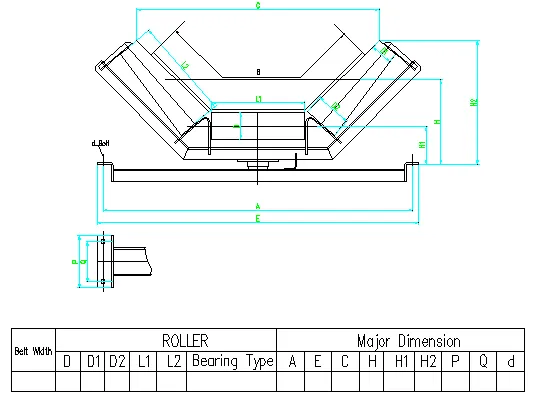 Afrikaans
Afrikaans  Albanian
Albanian  Amharic
Amharic  Arabic
Arabic  Armenian
Armenian  Azerbaijani
Azerbaijani  Basque
Basque  Belarusian
Belarusian  Bengali
Bengali  Bosnian
Bosnian  Bulgarian
Bulgarian  Catalan
Catalan  Cebuano
Cebuano  Corsican
Corsican  Croatian
Croatian  Czech
Czech  Danish
Danish  Dutch
Dutch  English
English  Esperanto
Esperanto  Estonian
Estonian  Finnish
Finnish  French
French  Frisian
Frisian  Galician
Galician  Georgian
Georgian  German
German  Greek
Greek  Gujarati
Gujarati  Haitian Creole
Haitian Creole  hausa
hausa  hawaiian
hawaiian  Hebrew
Hebrew  Hindi
Hindi  Miao
Miao  Hungarian
Hungarian  Icelandic
Icelandic  igbo
igbo  Indonesian
Indonesian  irish
irish  Italian
Italian  Japanese
Japanese  Javanese
Javanese  Kannada
Kannada  kazakh
kazakh  Khmer
Khmer  Rwandese
Rwandese  Korean
Korean  Kurdish
Kurdish  Kyrgyz
Kyrgyz  Lao
Lao  Latin
Latin  Latvian
Latvian  Lithuanian
Lithuanian  Luxembourgish
Luxembourgish  Macedonian
Macedonian  Malgashi
Malgashi  Malay
Malay  Malayalam
Malayalam  Maltese
Maltese  Maori
Maori  Marathi
Marathi  Mongolian
Mongolian  Myanmar
Myanmar  Nepali
Nepali  Norwegian
Norwegian  Norwegian
Norwegian  Occitan
Occitan  Pashto
Pashto  Persian
Persian  Polish
Polish  Portuguese
Portuguese  Punjabi
Punjabi  Romanian
Romanian  Russian
Russian  Samoan
Samoan  Scottish Gaelic
Scottish Gaelic  Serbian
Serbian  Sesotho
Sesotho  Shona
Shona  Sindhi
Sindhi  Sinhala
Sinhala  Slovak
Slovak  Slovenian
Slovenian  Somali
Somali  Spanish
Spanish  Sundanese
Sundanese  Swahili
Swahili  Swedish
Swedish  Tagalog
Tagalog  Tajik
Tajik  Tamil
Tamil  Tatar
Tatar  Telugu
Telugu  Thai
Thai  Turkish
Turkish  Turkmen
Turkmen  Ukrainian
Ukrainian  Urdu
Urdu  Uighur
Uighur  Uzbek
Uzbek  Vietnamese
Vietnamese  Welsh
Welsh  Bantu
Bantu  Yiddish
Yiddish  Yoruba
Yoruba  Zulu
Zulu Different Varieties and Functions of Conveyor Pulley Systems Explained
Types of Conveyor Pulleys
Conveyor belts are integral components in various industries, facilitating the efficient movement of materials from one point to another. A key element of this system is the conveyor pulley, which plays a crucial role in controlling the tension and movement of the belt. Understanding the different types of conveyor pulleys is essential for optimizing conveyor systems and ensuring operational efficiency.
1. Drive Pulley
The drive pulley is pivotal in any conveyor system, responsible for powering the belt movement. It is typically located at the head or discharge end of the conveyor, where it transmits the motor’s power to the belt. Drive pulleys come in various designs, including lagged, smooth, and crowned types. Lagging is a protective layer applied to the pulley surface to enhance traction and protect against wear from the belt material. A well-designed drive pulley improves the conveyor's efficiency, prevents belt slippage, and reduces maintenance costs.
2. Idler Pulley
Idler pulleys, also known as return pulleys, support the conveyor belt and maintain its tension throughout its operation. Positioned along the length of the conveyor, they help support the load and guide the belt back to the drive pulley. Idlers are crucial in reducing friction and preventing damage to the belt. They can be categorized into various types, including flat, troughing, and impact idlers, depending on their configuration and the type of material transmitted. Proper selection and arrangement of idler pulleys significantly enhance the lifespan of the conveyor system.
3. Tail Pulley
The tail pulley, situated at the opposite end of the drive pulley, serves as a critical component in maintaining the belt’s tension. It ensures that the belt returns smoothly and does not sag or slip during operation. Tail pulleys often have a smaller diameter than drive pulleys, which helps to create appropriate tension in the belt. Additionally, they may possess features such as a crowned surface or a lagging layer to improve grip.
types of conveyor pulley

4. Snub Pulley
Snub pulleys are used to increase the wrap angle between the drive pulley and the conveyor belt, enhancing the friction and improving the power transfer to the belt. By strategically placing snub pulleys on the conveyor system, operators can optimize the system’s performance while minimizing slippage. Snub pulleys are particularly useful in applications requiring increased tension and traction.
5. Drum Pulley
Drum pulleys are large cylinders that can serve either as a drive or an idler pulley. These pulleys come in various sizes and are designed for high-load applications. Their robust construction helps withstand significant torque and impact forces, making them ideal for heavy-duty operations. Drum pulleys can incorporate various lagging materials to enhance grip and wear resistance.
6. Magnetic Pulley
Magnetic pulleys are specialized types designed for handling metal and ferrous materials. With integrated magnets, they can effectively separate metal debris from non-metallic materials during the conveyor process. Magnetic pulleys are commonly used in recycling, mining, and food processing industries where material purity and cleanliness are critical.
Conclusion
Understanding the various types of conveyor pulleys is essential for selecting the right components for any conveyor system. Each type of pulley serves specific purposes, contributing to the overall efficiency and reliability of the conveyor belt. By carefully choosing the appropriate pulleys, industries can enhance productivity, reduce downtime, and extend the service life of their conveyor systems. Integrating a well-designed pulley system allows for smooth operations and optimal material handling, making it a vital consideration in any conveyor project.
-
Revolutionizing Conveyor Reliability with Advanced Rubber Lagging PulleysNewsJul.22,2025
-
Powering Precision and Durability with Expert Manufacturers of Conveyor ComponentsNewsJul.22,2025
-
Optimizing Conveyor Systems with Advanced Conveyor AccessoriesNewsJul.22,2025
-
Maximize Conveyor Efficiency with Quality Conveyor Idler PulleysNewsJul.22,2025
-
Future-Proof Your Conveyor System with High-Performance Polyurethane RollerNewsJul.22,2025
-
Driving Efficiency Forward with Quality Idlers and RollersNewsJul.22,2025





























